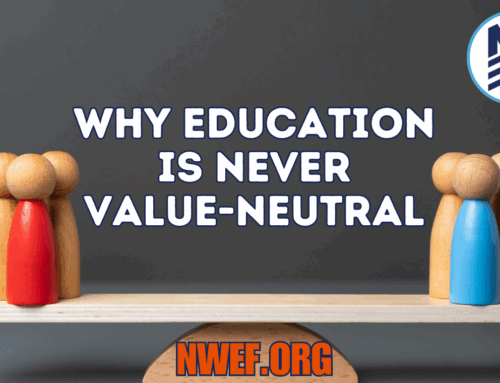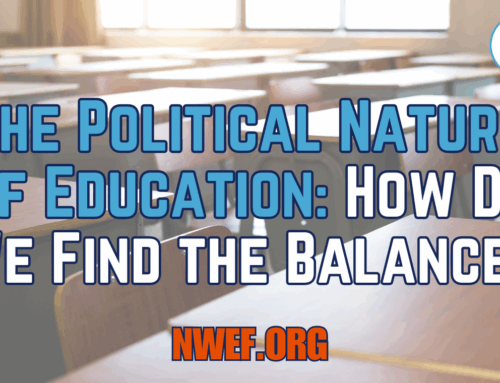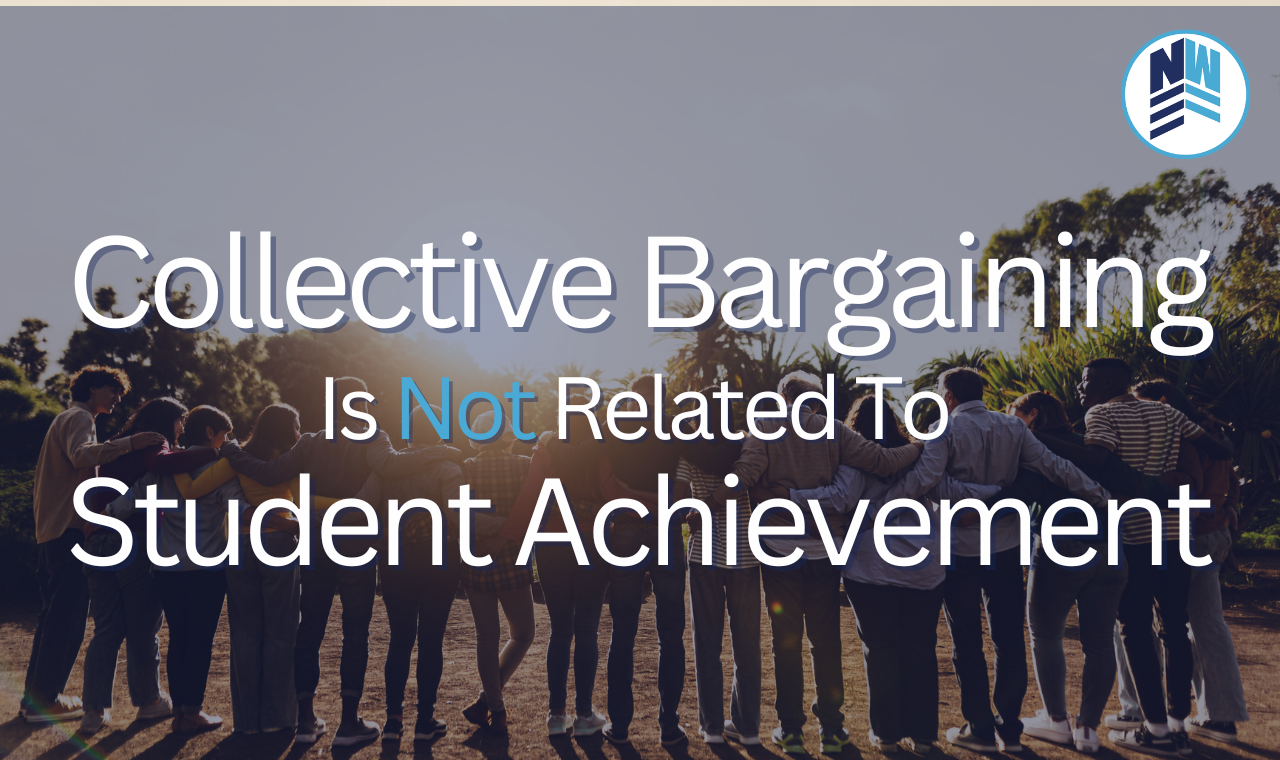
There has been some debate in recent months about collective bargaining and it’s relation to student achievements. A Virginia school board member contacted Noah Webster Educational Foundation over the following statement made by a teacher in Albemarle Co., Virginia, a county whose teachers had just won collective bargaining rights:
“It’s not a coincidence that the strongest performing states in K-12 education also happen to have strong collective bargaining practices in their schools.”
The board member asked, “This quote can’t possibly be true, is it? Can you help with any fact-checking or counterpoints to this?”
His question brought to mind a plenary discussion from our recent Virginia School Board Summit, that focused on “Diagnosing Waste in Your District Budget.” One of the panel members, Dave Trabert from the Kansas Policy Institute, shared significant information about national education spending by states and their corresponding National Assessment of Educational Progress (NAEP) scores in reading and math. The data showed that strong testing results were not so much tied to the amount of money spent but instead tied to the focus of the investment.
Because of his research and grasp of the data, we asked Dave Trabert for input on the issue.
RealClear Education published his response to the Virginia teacher’s claim:
“The recent claim about collective bargaining by a Virginia teacher is reminiscent of a lesson used by the late Senator Daniel Patrick Moynihan to help fellow Democrats understand that there is no connection between school funding and student achievement.
Noting that northern states tended to have better outcomes, Moynihan, with tongue planted firmly in cheek, exclaimed, “If you want to improve your state’s math scores, move your state closer to the Canadian border!”
Moynihan was pointing out the flaw of a simple bi-variate analysis, wherein an association is made with two variables. Variable #1 (math scores) and variable #2 (proximity to Canada) may be accurate, but that doesn’t mean that one is caused by the other.
Tim Klobuchar, a teacher at Monticello High School in Virginia, made a Moynihan-like statement about collective bargaining last week, except he was being serious.
“It’s not a coincidence that the strongest performing states in K-12 education also happen to have strong collective bargaining practices in their schools.”
Now, it’s true that some states have better outcomes than others, and it’s also true that some states are more heavily unionized than others, but the two are no more related than math scores and proximity to the Canadian border.
There is no data comparing the relative strength of collective bargaining practices among school districts across the nation, but we can compare the performance of Right to Work states and those with forced unionization. A new analysis by the Kansas Policy Institute assigned a composite score to each state in the adjacent table, comprised of the eight primary measurements from the 2022 National Assessment of Educational Progress (NAEP) – 4th Grade and 8th Grade reading and math scores for low-income students and those who are not low-income, all equally weighted.
State averages cannot be used because there are large achievement gaps between the two student cohorts, so a state with a higher percentage of low-income students can appear to have lower outcomes simply because of demographics.
This analysis shows that eight of the ten states with the highest NAEP composite are Right to Work states, as are 15 of the top 25 states.
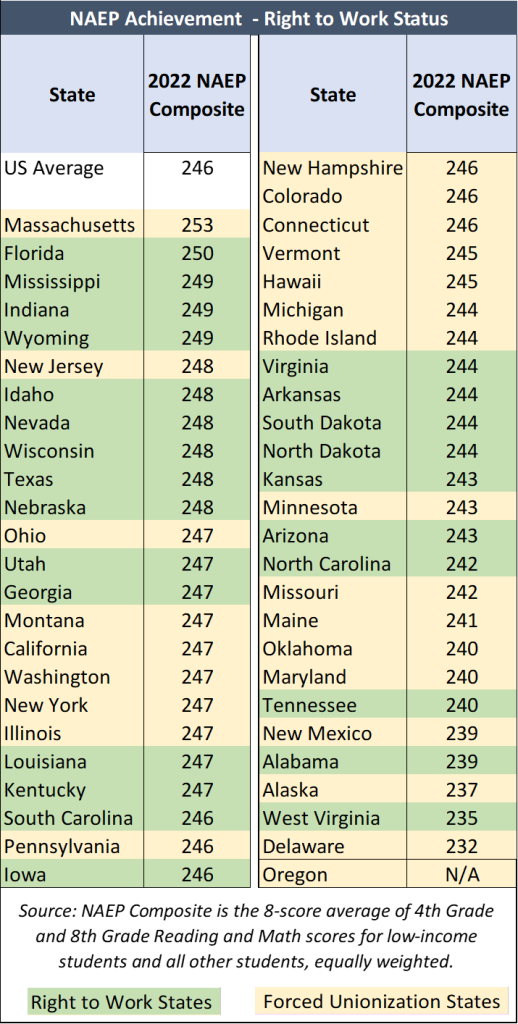
That’s not to say that those states have higher scores because of their Right to Work status, but it casts strong doubt on collective bargaining impacting student outcomes.
Some education officials contend that higher spending produces better outcomes, but again, the data shows otherwise.
The table below compares the same NAEP composite scores with the most current per-student spending data from the U.S. Census Bureau, adjusted for the cost of living in each state. A cost-of-living adjustment that reflects the same purchase power for each state is necessary because a dollar spent in a state like Kansas buys a lot more than a dollar spent in a state like New York.
The results of the spending and achievement comparison are stunning:
– 11 states got the same or higher NAEP score as Virginia but spent much less.
– 3 states got the same NAEP score as Virginia but spent a lot more.
– 9 states scored worse than Virginia and spent a lot more.”
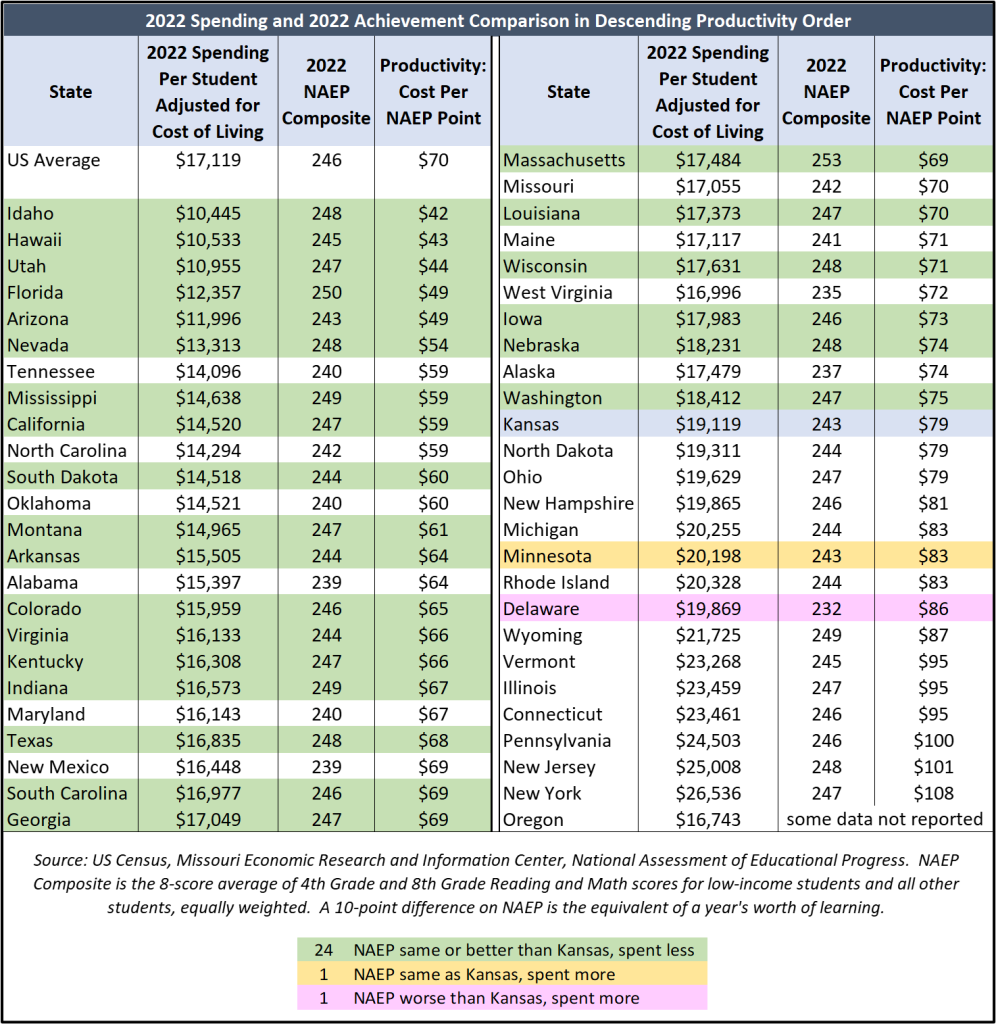
There is no relationship between collective bargaining (or school funding) and student achievement
Dave Trabert goes on to clarify:
“The enormous productivity range across the states also refutes the notion that funding drives achievement.
Dividing per-student spending by the NAEP composite score produces a productivity index that shows which states get the best bang for the educational buck.
Idaho has the best productivity, spending $42 for each point of the NAEP composite, and New York has the worst, at $108 per point. Other states’ productivity scores are rather evenly distributed between the high and the low, not bunched closely together as causation between funding and achievement would suggest.
Money matters, but a large body of research finds that it is how money is spent that can make a difference, not how much is spent.
There is no silver bullet solution like more funding or collective bargaining that will resolve the student achievement crisis in this country. In Great on Their Behalf, author AJ Crabill posits that student outcomes don’t change until adult behaviors change.
Local school boards and district administrators must lead the effort to change adult behaviors. Sit down with teachers and principals in each school and ask, ‘What are the barriers to achieving proficiency,’ and determine how to reallocate existing resources to overcome those barriers. Then, put a plan in place with SMART goals (Specific, Measurable, Attainable, Relevant, and Time-Bound) and devote at least half of every board meeting to monitoring progress on the plan.
This process is common sense to anyone who recovered from drug or alcohol addiction or has built a successful business, but it is revolutionary in public education, where state school board associations discourage active involvement by board members. State law requires Kansas school boards to conduct such a process, but many superintendents won’t allow board members to participate.
This is the kind of adult behavior that must change before student outcomes can change.”
Version’s of this article can be found on Kansas Policy Institute and RealClearEducation



